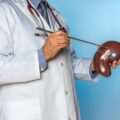Commentary
In this study, J. Boeckmans et al. (Faculty of Medicine and Pharmacy, Vrije Universiteit, Brussels, Belgium) reproduced key NASH characteristics in vitro by exposing primary human hepatocytes, human skin stem cell-derived hepatic cells, HepaRG and HepG2 cell lines, as well as LX-2 hepatic stellate cells to multiple factors that play a role in the onset of NASH. These in vitro disease models showed intracellular lipid accumulation, secretion of inflammatory chemokines, induced ATP content, apoptosis, and increased pro-fibrotic gene expression.
These cell systems were then used by the authors to evaluate the anti-NASH properties of peroxisome proliferator-activated receptor agonists. They developed an in vitro scoring system in order to grade the anti-NASH potencies. Their results corroborate available clinical data and show the relevance of these in vitro models for the preclinical investigation of anti-NASH compounds.


